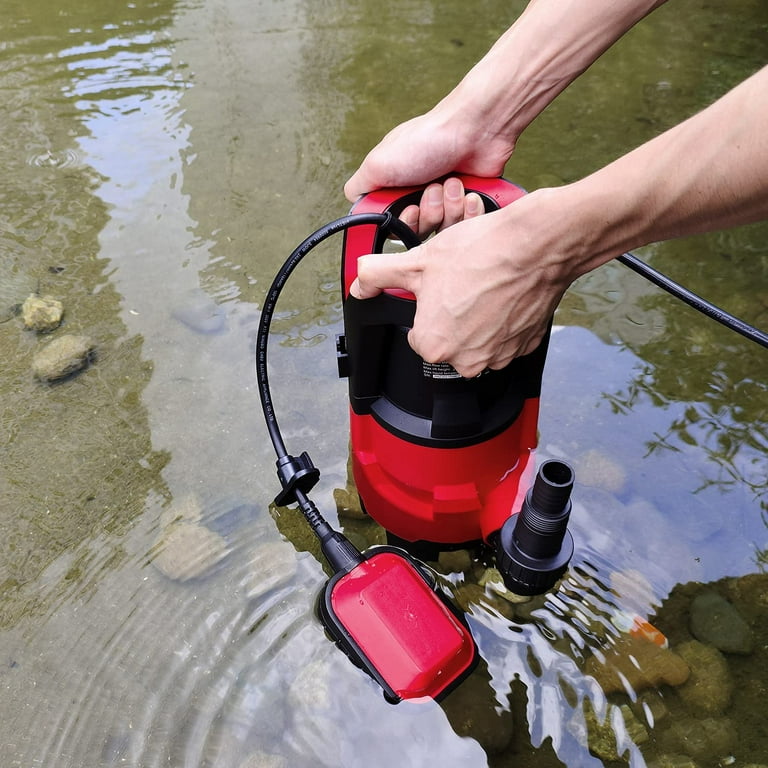Clear Tips for Taking Care of Your Sump Pump
Clear Tips for Taking Care of Your Sump Pump
Blog Article
We have unearthed this article on Keep Your Sump Pump Clean, It'll Keep You Dry listed below on the net and accepted it made good sense to write about it with you over here.

Sump pumps are important components in numerous homes, particularly in areas vulnerable to flooding or extreme moisture. They help protect against water damages by efficiently eliminating excess water from cellars or crawl spaces. Nevertheless, like any other device, sump pumps need routine maintenance to guarantee they operate efficiently when needed one of the most. Cleaning your sump pump is an important part of its upkeep, and comprehending how to do it appropriately can save you from costly repair work and possible catastrophes.
Introduction
Maintaining a tidy sump pump is important for its appropriate functioning and longevity. Neglecting this important job can bring about blockages, malfunctions, and inevitably, water damages to your property. Consequently, discovering how to cleanse a sump pump is important for homeowners that count on these devices to maintain their cellars dry and safeguarded.
Understanding the Sump Pump
Prior to diving right into the cleaning process, it's essential to have a fundamental understanding of exactly how a sump pump functions. Generally set up in a pit or container listed below the cellar flooring, a sump pump includes several essential parts, consisting of a pump, a float button, and a discharge pipeline. When water accumulates in the pit, the float button triggers the pump, which then pumps the water out through the discharge pipe, far from the structure's foundation.
Indications of a Dirty Sump Pump
Understanding when your sump pump needs cleansing is vital for avoiding potential breakdowns. Some common indicators that show a filthy sump pump include odd noises during operation, lowered water flow, and noticeable debris in the pit. If you see any one of these signs and symptoms, it's essential to clean your sump pump quickly to avoid any type of further concerns.
Preparing for Cleaning
Before you start cleansing your sump pump, it's vital to take some safety and security precautions. Beginning by shutting down the power to the pump to avoid any electrical crashes. Additionally, put on proper safety equipment, such as gloves and safety glasses, to shield yourself from dust, debris, and prospective pathogens.
Step-by-step Guide to Cleaning Up a Sump Pump
Turning off the Power
Begin by separating the power supply to the sump pump to stop any mishaps while cleansing.
Eliminating Debris and Dust
Utilize a pail or a scoop to get rid of any type of noticeable debris, dust, or sediment from the sump pit. Dispose of the debris properly to stop it from clogging the pump or the discharge pipe.
Cleaning up the Pump and Float Switch
When the pit is clear of particles, thoroughly remove the pump from the pit. Evaluate the pump and the float switch for any kind of indicators of damages or wear. Use a soft brush or fabric to clean the surfaces and get rid of any accumulated grime.
Purging the System
After cleansing the pump and float button, purge the sump pit with tidy water to remove any staying dust or debris. This will certainly aid make sure that the pump runs efficiently and efficiently.
Checking for Proper Functioning
Prior to re-installing the pump, perform a quick examination to ensure that the float switch turns on the pump properly. Put some water right into the sump pit and observe the pump's procedure. If whatever is operating properly, you can rebuild the pump and reconnect the power supply.
Maintenance Tips to Maintain Your Sump Pump Clean
Along with routine cleansing, there are several upkeep tips you can follow to keep your sump pump in optimum condition:
Conclusion
Cleaning your sump pump is a critical element of its maintenance and makes certain that it operates properly when you need it one of the most. By adhering to the steps described in this overview and integrating normal upkeep right into your routine, you can prolong the life expectancy of your sump pump and secure your home from water damage.
How to Clean a Sump Pump
Steps to Clean a Sump Pump
After checking to make sure your sump pump is off, disconnect the pump from the discharge pipe. Wrap your pump in plastic to prevent drips and carry it outside. Using your garden hose, rinse off any dirt or sludge from the surface of the pump. A plastic scraper or putty knife may be necessary to clean out the sump pump and remove caked-on debris. Leave it in a safe place to dry. Drain any standing water from your sump pit using a shop vac. If you have a check valve that can be disassembled, carefully disassemble it and allow any water to drain out of your check valve first, then remove it. Rinse the valve thoroughly with water, then dry and reassemble it. Once thoroughly dry, reattach your pump to the discharge pipe. Plug your unit back in. You’re all done! https://www.mrrooter.com/about/blog/2019/april/how-to-clean-a-sump-pump/

I discovered that piece about Keep Your Sump Pump Clean, It'll Keep You Dry while doing a lookup on the search engines. Are you aware of anybody else who is enthusiastic about the subject? Why not promote it. We truly appreciate reading our article about How To Effectively Clean A Sump Pump.
Book Now Report this page